| |
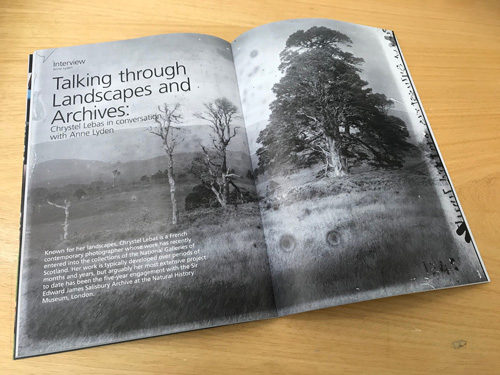 |
Studies in Photography-by Scottish Society for the History of Photography.
Chrystel Lebas in conversation with Anne Lyden, International Photography Curator at The National Gallery of Scotland
“AL: It strikes me that this level of research in many ways harkens back to your earlier portrait work in Poland
‘to find the right truth’ and also what you said about ‘you regain your memory from someone else’s memory’.
With regard to the Salisbury Archive, what was the experience of revisiting someone else’s work?
CL: It made me understand what ecology is; maybe now I’m not walking the landscape as a wanderer,
I am more aware that it has a history that has been influenced by man, animals, and climate.
The work is more than retracing Salisbury’s steps, certainly it was the beginning thread of the project,
but my own artistic input was critical. I did question what my role was as an artist.
I was a bit scared of losing myself, not knowing where it would take me…
there is so much content, so many layers; how do you channel them visually?
All this questioning was challenging. Yet very early on I had a vision of what I wanted the pictures to be.
I realised that Salisbury had a range of pictures: landscape overviews, plant pictures, and
close up studies organised in groups from the same location. I began to use
the same strategies in order to frame the Natural World.” |
| |
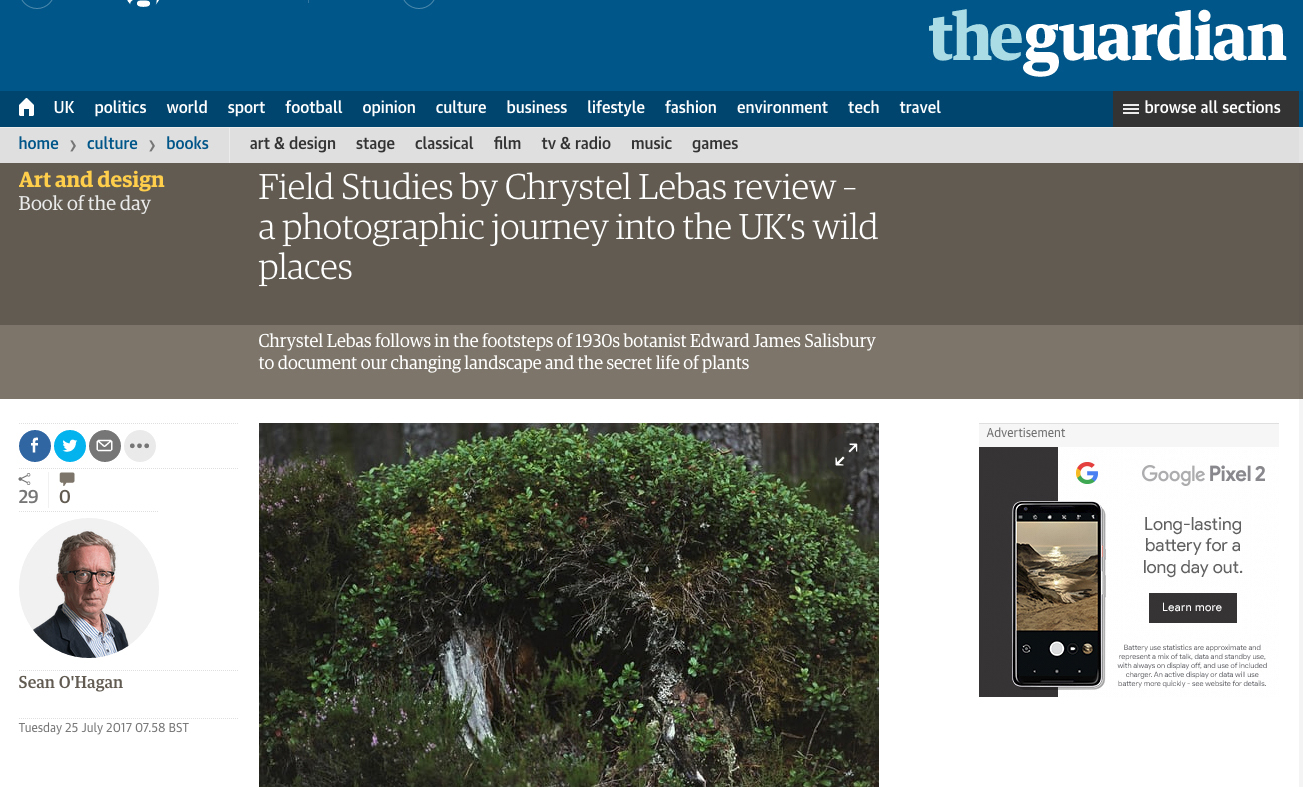 |
The Guardian Newspaper - July 2017 - Review ‘Field Studies by Chrystel
Lebas review – a photographic journey into the UK’s wild places’
by Sean O’Hagan
'...It is this dynamic that underpins the book, which is, in essence, an
investigation of a landscape that now has such a heavy human footprint
as to no longer be “natural” in the way Salisbury would have understood
the term. For all that, Lebas’s images have a kind of heightened
elementalism, being dark both in their colour tones and their
atmosphere. She uses a panoramic camera and often shoots at dusk
when the light quality in these still, quiet places can be almost
otherworldly. The air of mystery, even mysticism, that hovers around
some of Salisbury’s indistinct glass plate landscapes is echoed here in
the soft tones and muted light. Interestingly, one of Lebas’s touchstones
is not an artist, but a philosophical writer, Gaston Bachelard, whose
poetic musings on intimate spaces, reverie and shadow also inform her
approach...'
Sean O’Hagan |
| |
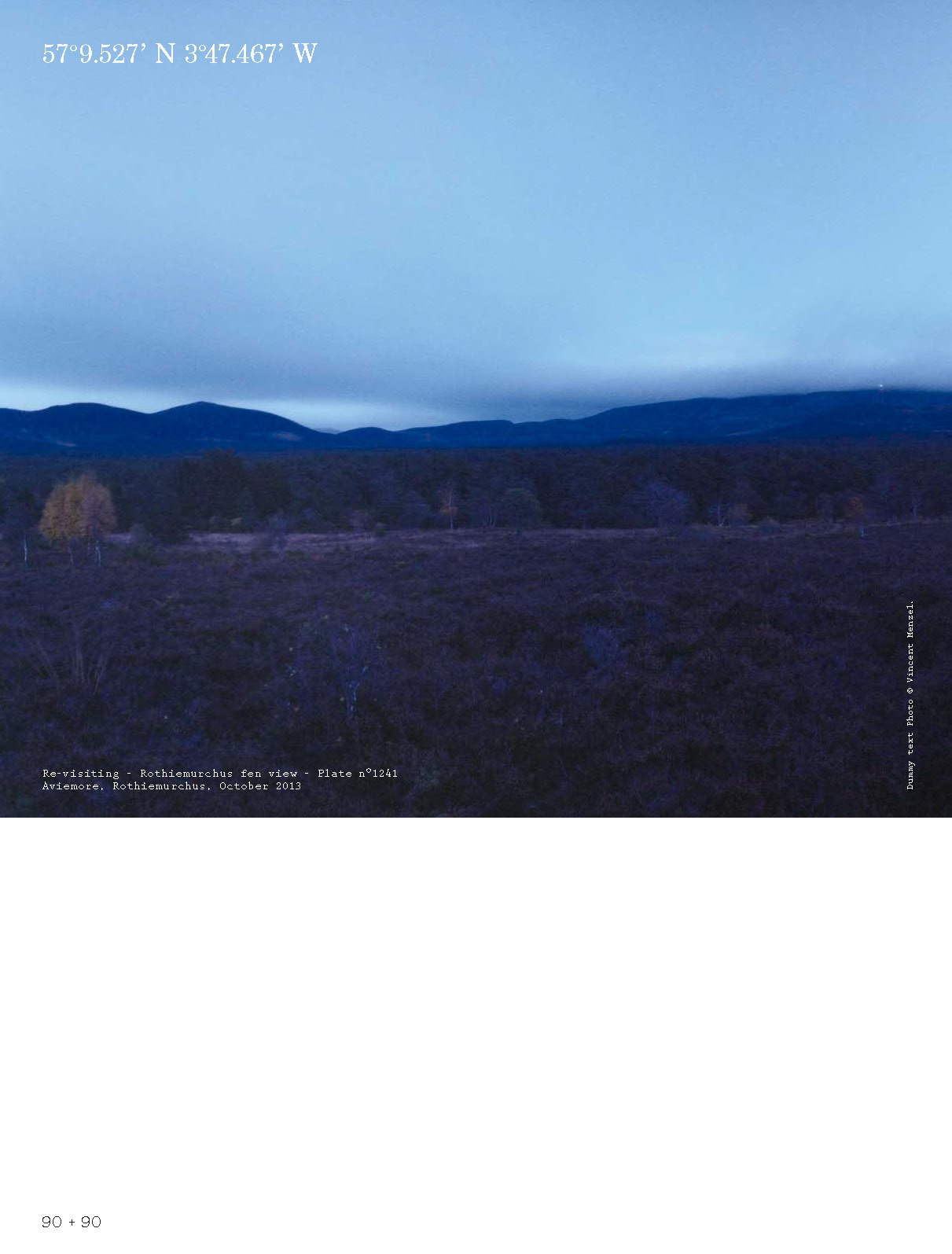 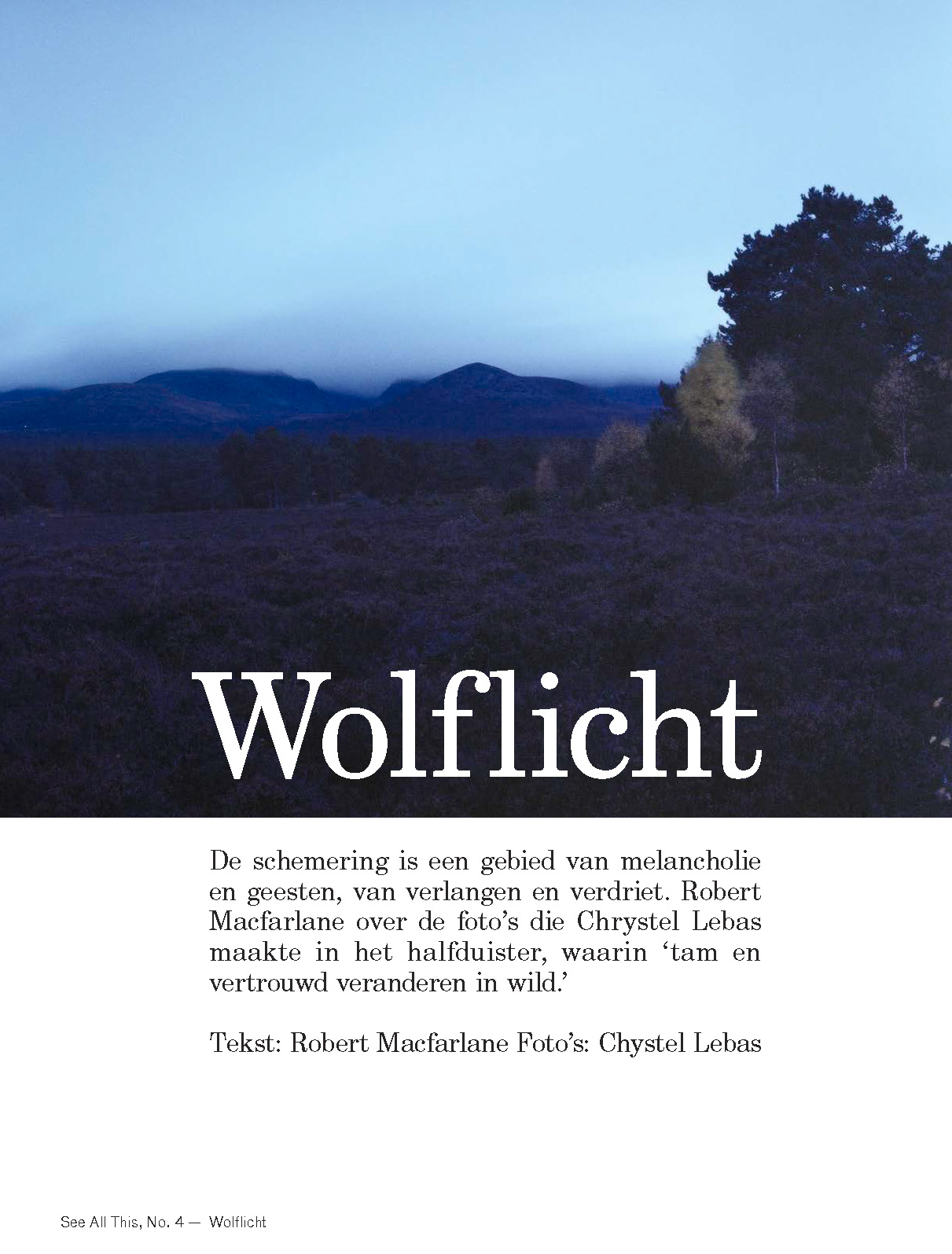 |
See All This Magazine No. 4 – Winter 2016-17
Essay by Robert MacFarlane - The Blue Hours
'Viewing Lebas’s mysterious work, I am reminded of some of the dusks I
have seen during my own years of walking and sleeping out in the
landscapes of Britain and beyond. Twilight in a bluebell wood in Suffolk,
when the colour of the flowers and the colour of the light combined to
produce the strong illusion that I was lying on the bed of an ocean. Dusk
on a winter peak in the Lake District, when for a few minutes the white
snow glowed the blue hue of compressed ice. Dusk in a Cambridgeshire
fen, watching starlings gathered in a shifting cloud above the reed-bed,
while a
sparrowhawk struck and struck again through the cloud, which
each time parted and then re-closed around the raptor’s kill-path.
Twilight prompts recollection, a sense of what has passed. As Peter
Davidson writes in his beautiful study of the poetics of dusk,
The Last Of The Light (2015), twilight is best thought of less as a period
of time and more as a ‘territory’: a ‘territory of melancholy and
revenants, longings and regrets’. For the only certainty of twilight is that
it will end. The completion of the scene is also its annihilation. The
earth will continue to rotate upon its axis, the sun will fall further below
the horizon, the light will slip from the last things, until finally it can be
said that night has come.'
Robert MacFarlane English Version |
| |
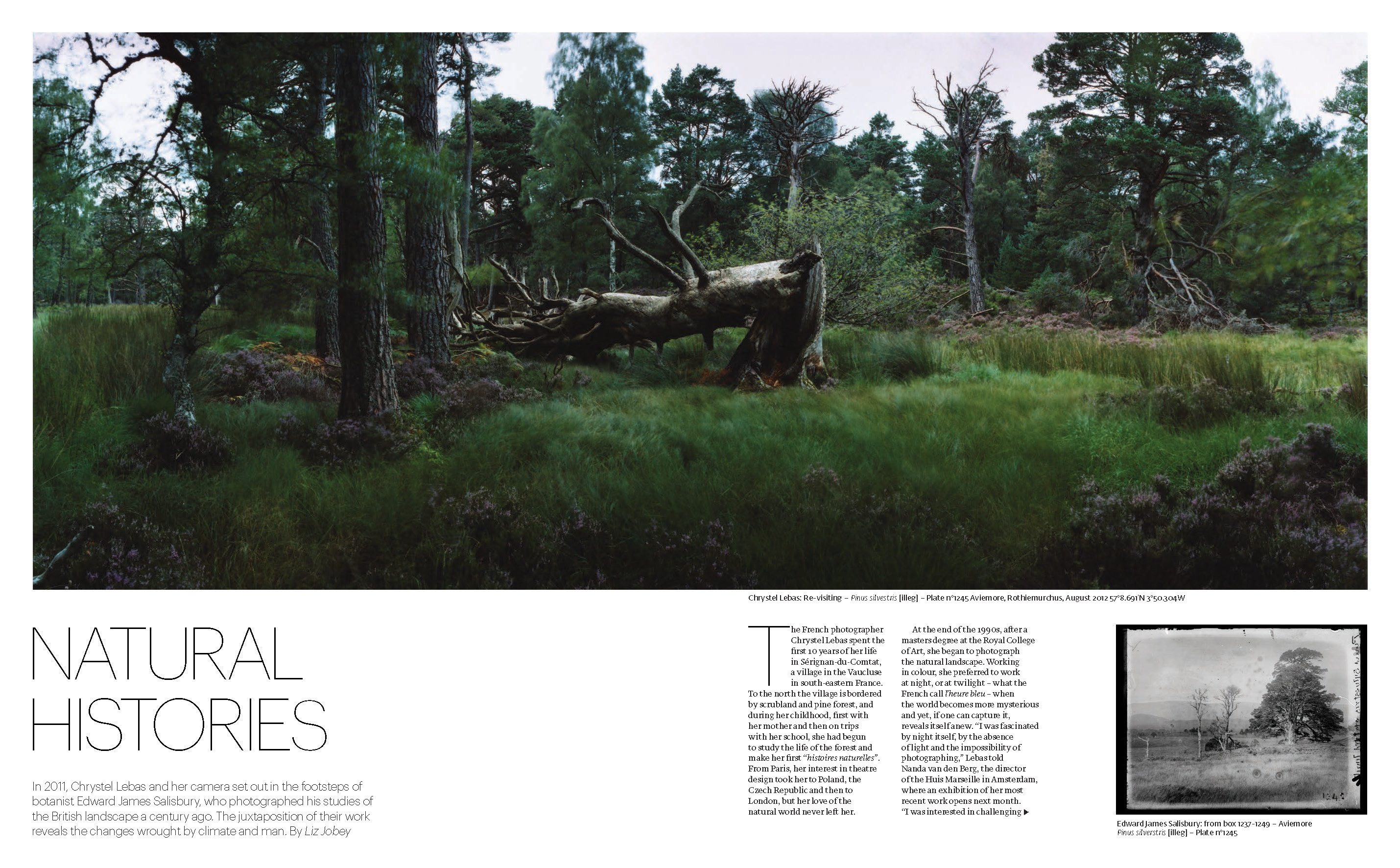 |
FT Weekend magazine – November 26/27 2016
Essay by Liz Jobey - Natural Histories
'In 2011, Chrystel Lebas and her camera set out in the footsteps of
botanist Edward James Salisbury, who photographed his studies of
the British landscape a century ago. The juxtaposition of their work
reveals the changes wrought by climate and man.'
Liz Jobey |
| |
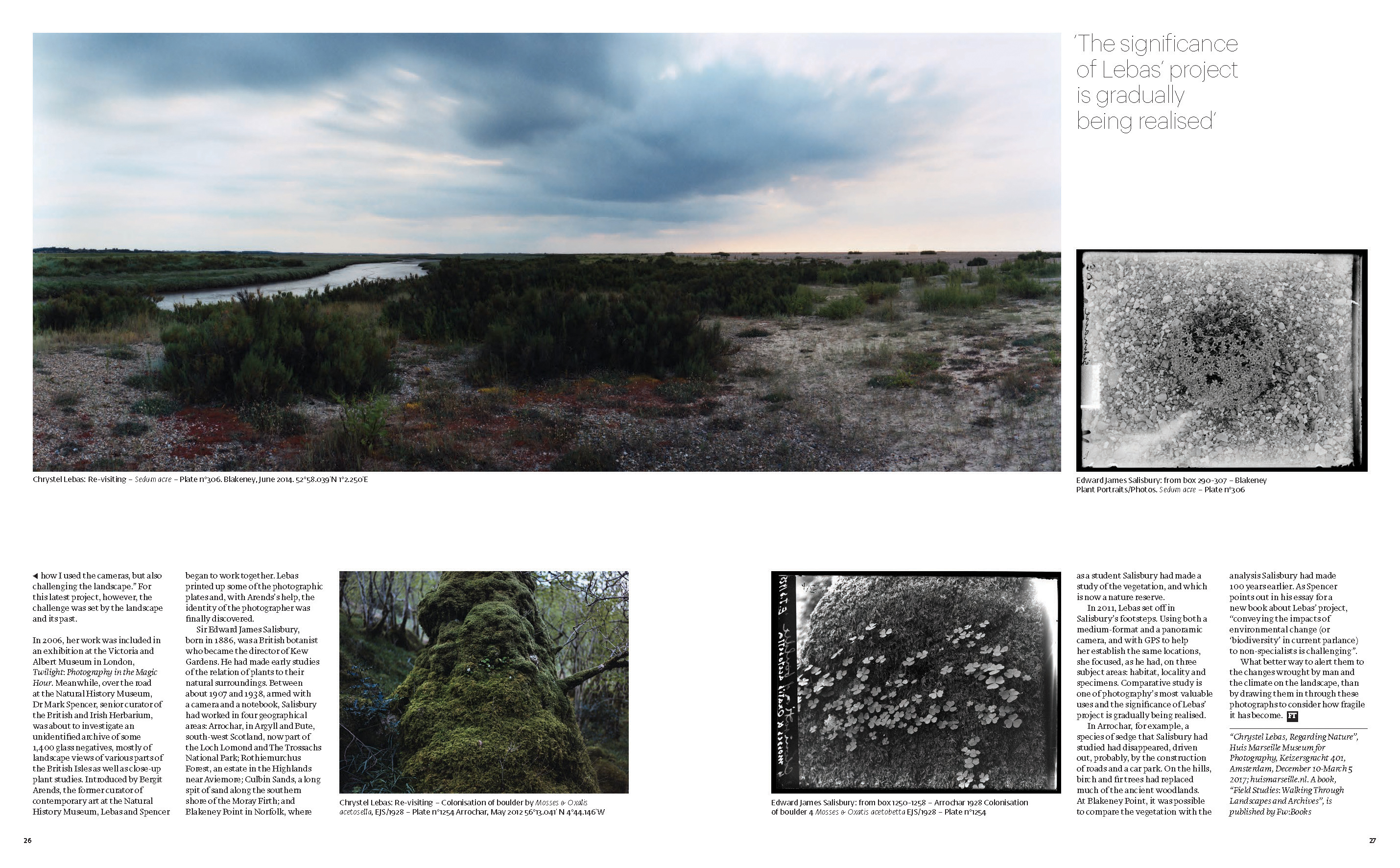 |
|
| |
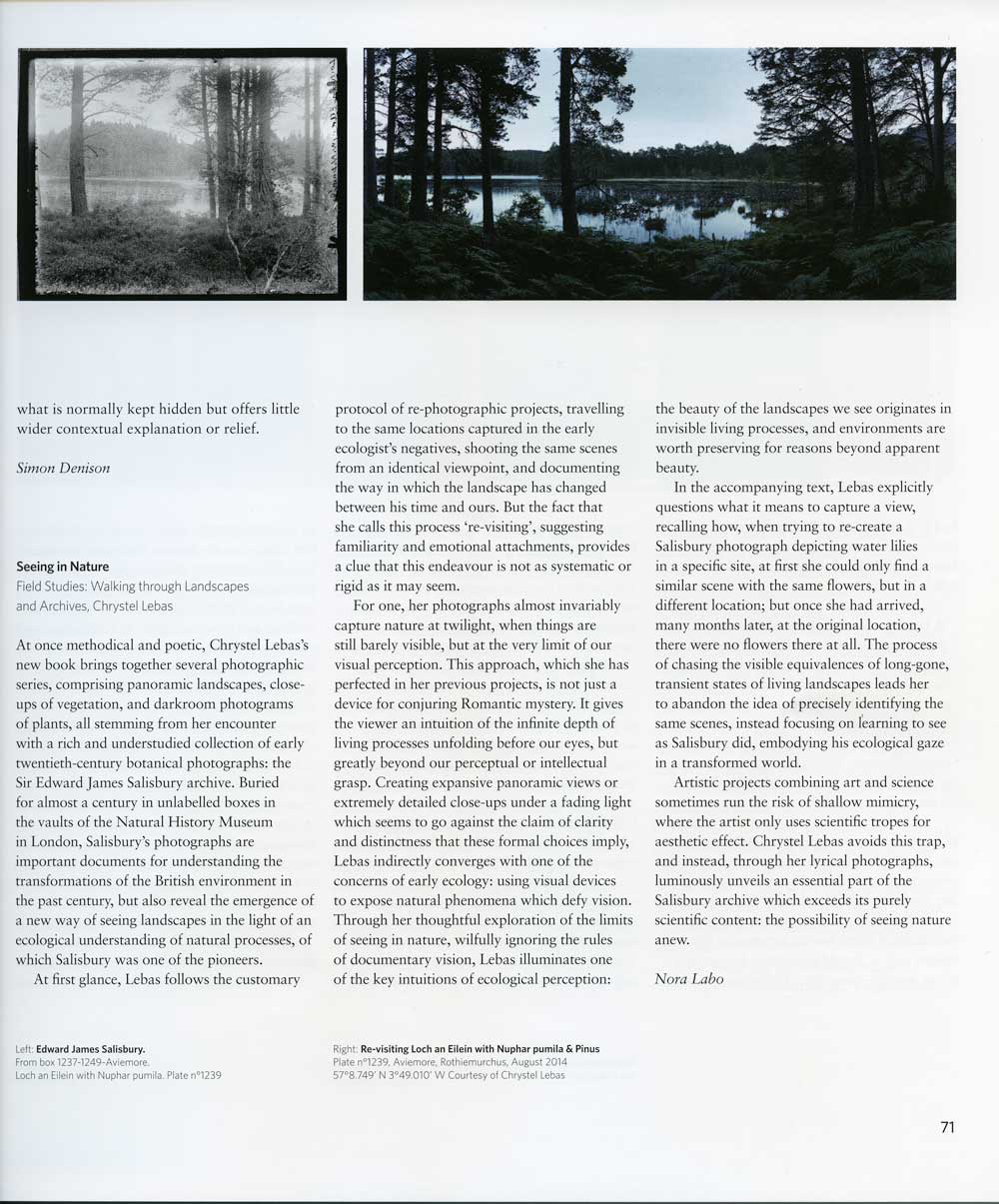 |
Source - The Photographic Review - 89
#Resist
'At once methodical and poetic, Chrystel Lebas's new book brings
together several photographic series, comprising panoramic
landscapes, close ups of vegetation , and darkroom photograms of
plants, all stemming from her encounter with a rich and understudied
collection of early twentieth-century botanical photographs :
the Sir Edward James Salisbury archive.(...) Artistic projects combining
art and science sometimes run the risk of shallow mimicry, where
the artist only uses scientific tropes for aesthetic effect.
Chrystel Lebas avoids this trap, and instead, through her lyrical
photographs, luminously unveils an essential part of the Salisbury
archive which exceeds its purely scientific content: the possibility of
seeing nature anew.'
Nora Labo |
| |
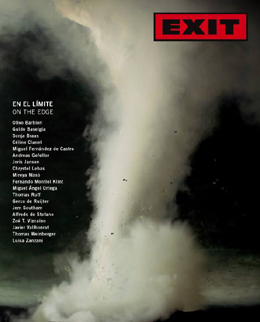 |
EXIT #52 On the Edge
Quarterly Magazine on Image and Culture
November / December 2013 / January 2014
Miguel Fernández de Castro, Andreas Gefeller,
Joris Jansen,
Chrystel Lebas, Mireya Masó,
Fernando Montiel Klint, Miguel Ángel
Ortega,
Thomas Ruff, Gerco de Ruijter, Jem Southam,
Alfredo de Stefano,
Zoé T. Vizcaíno, Javier Vallhonrat,
Thomas Weinberger
'WHAT ARE THE LIMITS OF PHOTOGRAPHY?
It is the eye that defines the limits, that increasingly deepens and
expands the possibility of forging ahead, of conquering, because
reaching the limit, crossing that frontier that few reach, is nothing if it
cannot be shown, if it cannot be photographed. So the gaze needs
the complement of photography.
The overwhelming earth, the scorching ice, the unfathomable water, the
dangers of invisible boundaries, but also, and increasingly, the limits of
the unknown: if this world is already known, we need to create eyes that
see further, cameras that can take our gaze where our bodies cannot go.
There are telescopes that help us see the furthest reaches of the
universe, far beyond the moon and Mars. The world may have become
small, travel, emigration and exploration of new resources may take
thousands of people anywhere, but the solitary individual is still the
one who reaches the most inaccessible crevices. The journey need not be
physical, however. When the imagination transports us, those limits are
also photographed, because the only limits of a photographer are the
limits of the gaze, with or without help, but limits only exist there where
the gaze of an artist does not reach.
This issue of EXIT examines these limits, the most remote places one can
reach, and their relation to photography. It is a way of exploring how far
photography and photographers can go today.'
Luisa Zanzani
|
| |
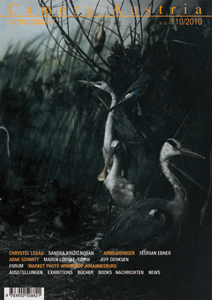 |
Camera Austria International - 110/2010
Article and magazine cover photographs by Chrystel Lebas
Essay by Sandra Krizic Roban: Chrystel Lebas: THE TRANSLATOR OF NATURE
Bilingual English/ German
'In the opinion of Simon Schama, there are two kinds of Arcadia:
one is smooth, slow-paced, and entirely quietened down, while the
other is overgrown with weeds, condensed, and pathless. The former
is a place of idyllic vacation, while in the latter we feel some
kind of uncertainty, uneasiness, maybe even panic. In places Chrystel
Lebas has visited it is possible to feel, or at least to sense, both
of these. In her earlier series, the feeling of time was expressed in a
different way than today; she insisted on immobility, on a lasting
quality that would mark the particular place she would pick, with
the artist sometimes hiding on hunting platforms for hours, lurking
for special moments in almost the same way a hunter lies in wait for
his prey (»The Wait«, 2007)'(...) Essay extract
select magazine cover for full article pdf
|
| |
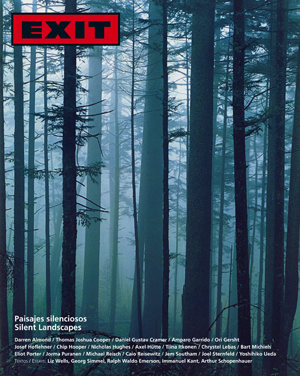 |
Exit Magazine - 38
Paisajes silenciosos - Silent Landscapes
Bilingual Spanish/ English
'Silent landscapes. Enigmatic places. A sublime beauty which brings us
close to the abyss. EXIT presents the natural world in its purest state
and the idea of landscape as a cultural construction. Photography, the
tool of the modern wanderer, is used on this occasion to approach those
places which are not common in contemporary society. With the help of
artists and writers, of images and literature, we are shown an
essentially good nature, where beauty is closer to the abyss than to
tranquillity.
The walk between Nature and Thought, between man and society, which
leads us into the forest, across the tundra, over the rivers and seas,
begins with Rosa Olivares' editorial 'Paradise Was Here Nearby'. The
introductory text by the German sociologist Georg Simmel, 'Philosophy
of the Landscape' [ 1918 ] provides an immersion into the ideas and
concepts which create the idea of landscape as a cultural element.
Liz Wells, Professor in Photographic Culture at the University of
Plymouth, explores in her essay 'Enigmatic Landscapes' the idea of
landscape not just as an aesthetic concept, but as one with social and
psychological implications. She reflects on a variety of issues
surrounding landscape photography: how it can act as a silencer of
nature; the idea of the artist as explorer; the difference between
wildness and wilderness; and the elements it involves such as
geography, autobiography, metaphor.'
|
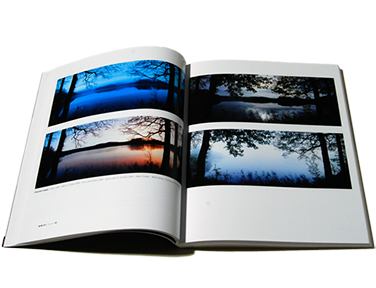 |
| |
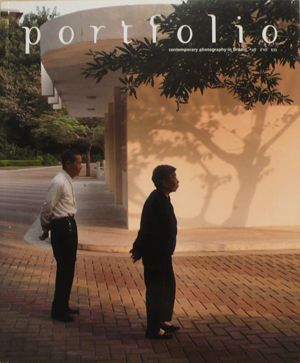 |
Portfolio Catalogue - Contemporary Photography in Britain - 48
photographs by Chrystel Lebas
Essay by Deborah Schultz: Chrystel lebas: The Wait- Culture and nature:
The immensity and imagination of the forest
(...)For all its darkness and mystery, the Royal Forest of Rockingham
is a medieval huntingforest in which paths were set out to aid the hunter.
This is anorderly wilderness, where man’s hunting activity is not for
survival, but amusement, in a space that facilitates his
manmade adventure. As Simon Schama writes, “it is this
irreversibly modified world, from the polar caps to the
equatorial forests, that is all the nature we have”.5 Is, then, the
modern wild wilderness an illusion, like the photographic
image? A cultural construct designed to fulfil man’s need for
something other than the industrialised world? If it is, modern
man may seek escape in the artifice of photographic images of
majestic scale and depth.'Lebas’s photographs are located in the tensions
between culture and nature, beauty and darkness, the manmade
landscape and the wild sublime. Whereas in previous series her
forests were generalised, the titles of photographs in The Wait
refer to particular locations. A sense of memory now underlies
images which are grounded in the history of specific places,
events and narratives.
While the drama of the natural world is played out for
man’s pleasure, the darkness of death remains imminent. The
unseen, unspoken narrative is one of swift sound, blood and
another kind of loss. None of this is visible in Lebas’s
photographs, where the timeless stillness of the forest space
transcends the limited temporality of man and his pastimes. The
forest plays the role of satisfying “one of our most powerful
yearnings: the craving to find in nature a consolation for our
own mortality”.'(...) Essay extract
select magazine cover for full article pdf |
| |
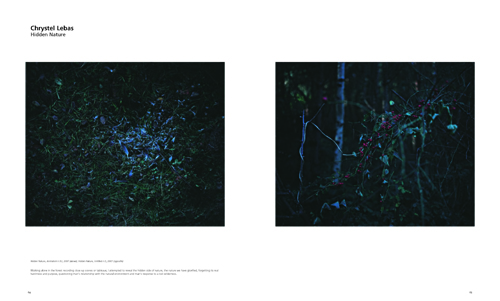 |
Portfolio Catalogue - Contemporary Photography in Britain - 50
photographs and text by Chrystel Lebas
To celebrate the 50th issue of Portfolio marking 21 years of the
publication, 50 of the UK's most significant artists photographers
contributed two pages of their newest works for this special extended
issue.
Chrystel Lebas: Hidden Nature
'Walking alone in the forest recording close up scenes or tableaux,
I attempted to reveal the hidden side of nature, the nature we have
glorified, forgetting its real
harshness and purpose, questioning man’s
relationship with the natural environment and man’s response to a lost
wilderness.'
Chrystel lebas |
| |
|
|












